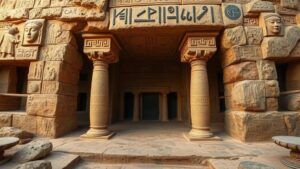Searching for the mythical “River of Gold,” said to flow through a hidden city in the Amazon.
The Quest for the River of Gold: Myths and Realities in the Amazon
For centuries, explorers, adventurers, and treasure hunters have been drawn to the Amazon rainforest, a verdant expanse that harbors rich biodiversity and untold secrets. Among its most enticing legends is that of the River of Gold, rumored to flow through an ancient, hidden city. This article delves into the origins of this myth, historical attempts to locate the river, and the implications of such quests in the context of modern exploration.
The Origins of the Legend
The story of the River of Gold dates back to the earliest European conquests in South America. Spanish conquistadors, fueled by tales from local indigenous tribes, began their expeditions in the 16th century, most notably under the leadership of Francisco de Orellana. In 1541, Orellana led an expedition that became the first documented journey down the Amazon River. His chronicles included descriptions of prosperous civilizations and vast riches–a narrative that captivated future generations.
According to various accounts, indigenous peoples spoke of a city made of gold, named El Dorado, which would eventually come to symbolize the river filled with golden treasures. This vision of a golden city persisted and evolved, leading many to believe in the existence of fountains of gold within the Amazon.
Historical Expeditions
Throughout the 17th and 18th centuries, numerous expeditions were launched in search of the River of Gold. These explorations were often characterized by their perilous nature, marked by unexpected challenges including disease, hostile encounters with indigenous tribes, and the regions treacherous terrain.
- Walter Raleigh (1595): The English explorer led an expedition into the heart of the Amazon, searching for El Dorado. Although he collected valuable information about the region, he found no gold and faced fierce resistance from locals.
- Antonio de Mendoza (1539): As the Viceroy of New Spain, Mendoza sent expeditions into South America to discover the fabled golden city. His ventures revealed the immense challenges of navigating the Amazon basin.
Modern Interpretations
In recent years, scientific advancements have shifted the approach to uncovering the hidden treasures of the Amazon. Archaeological studies utilizing LiDAR (Light Detection and Ranging) technology have revealed remnants of advanced civilizations throughout the region, indicating that complex societies once thrived there. For example, researchers found the remains of a large, previously unknown urban center in 2018, organized with a sophisticated transportation system. This has led to renewed interest in the area, though no definitive evidence of a River of Gold has emerged.
Environmental Considerations
While the allure of the River of Gold captures the imagination, the reality of modern exploration must also consider environmental sustainability. Deforestation, illegal mining, and climate change pose significant threats to the Amazon rainforest. Efforts to uncover its treasures must be balanced against the need to preserve its biodiversity and the rights of indigenous peoples. As outlined in a 2020 report by WWF, approximately 17% of the Amazon rainforest has already been lost, and unchecked exploitation could lead to irreversible damage.
The Allure of the Myth and Its Lessons
The myth of the River of Gold serves as a powerful metaphor for human ambition and the quest for wealth. It raises fundamental questions about the interplay between exploration and exploitation. The narratives that have emerged over the centuries reflect not just a desire for riches, but also a fascination with the unexplored and the unknown.
While treasure hunters continue to seek their fortunes in the Amazon, their pursuits underline the importance of responsible exploration. Understanding the rich history and cultural significance of this region is crucial, and initiatives that foster cooperation with indigenous communities and environmental stewardship can pave the way for more sustainable exploration.
Actionable Takeaways
- Be aware of the environmental impact of expeditions in sensitive ecosystems like the Amazon.
- Support organizations focusing on sustainable exploration and indigenous rights.
- Educate yourself on the history and cultures of South America’s indigenous peoples to foster a deeper understanding of the region.
The legend of the River of Gold reminds us that beneath our drive for discovery lies a responsibility to protect and preserve the natural world. In a time where our planet faces unprecedented challenges, embracing this ethos could be the real treasure we uncover.


